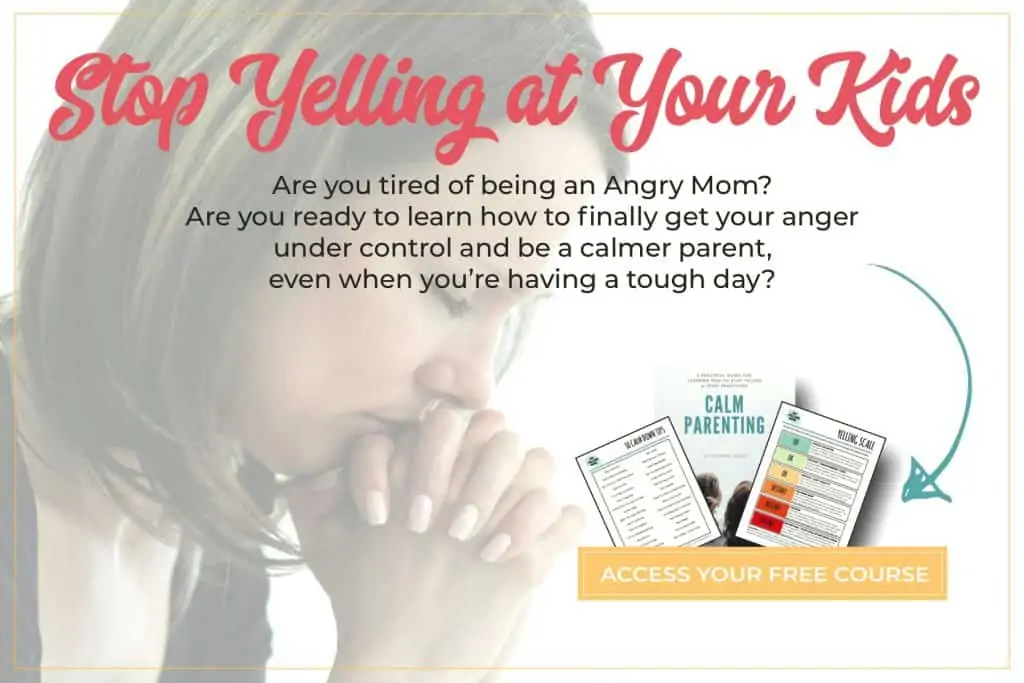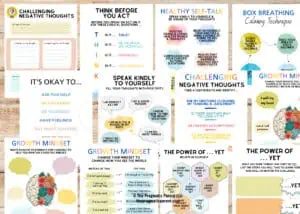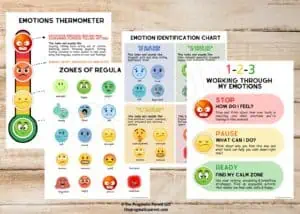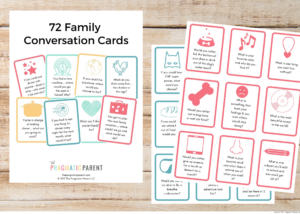Remote learning and homeschool, what are they and how do they compare? Homeschooling and distance learning are similar, but have an equal amount of differences to consider when making an education choice for your child. Also, if you have a preschooler or kindergartener at home and are doing homeschool, the ABC basics bundle and the numbers & counting bundle are both fun worksheets to introduce.
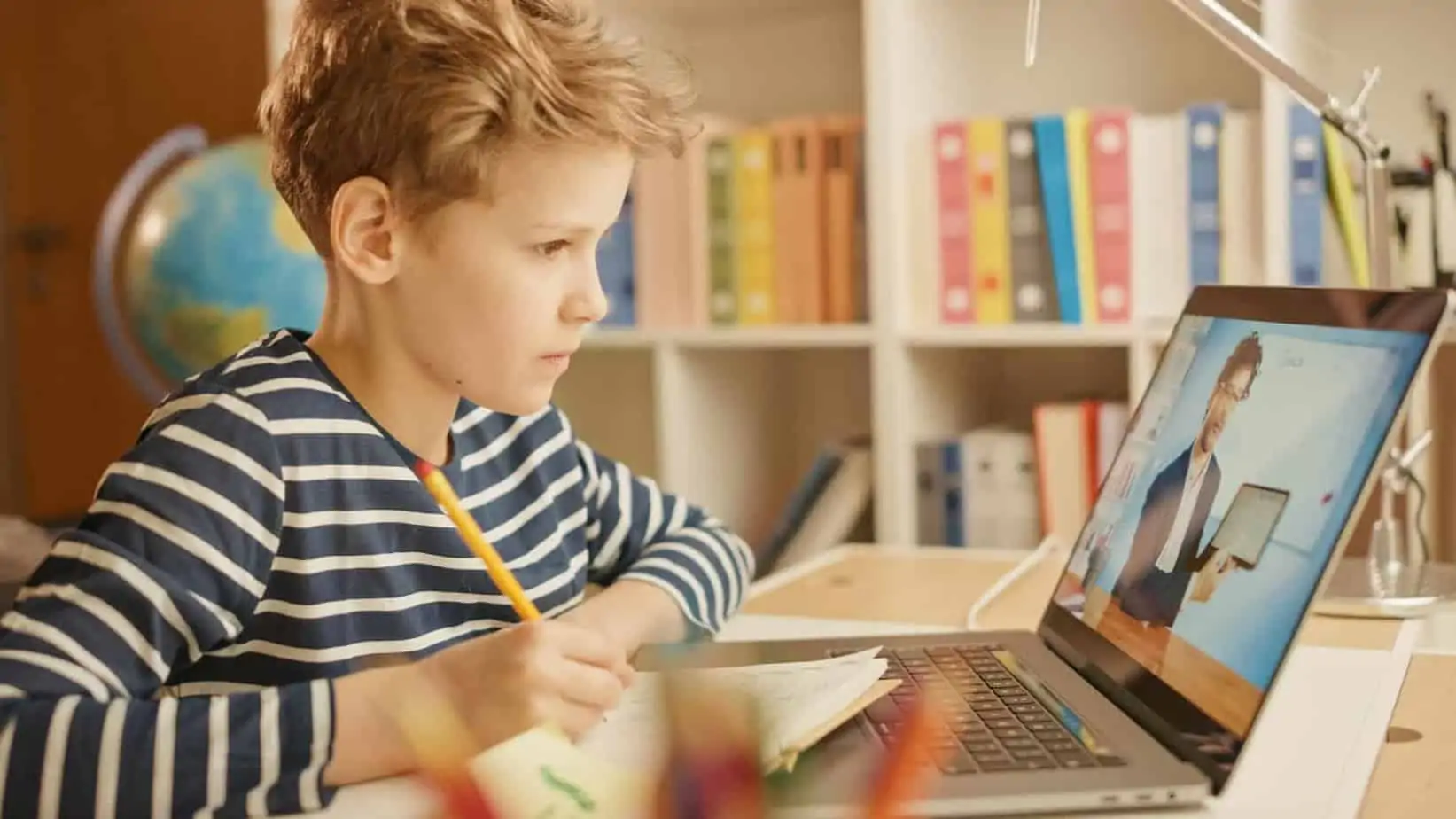
What’s the Difference Between Remote Learning & Homeschool?
Homeschooling and distance learning have many similarities, but equally a lot of differences in the way they work best for students and families. Homeschooling and remote learning are terms used interchangeably, but they actually have distinctly different learning styles.
Yes, both homeschool and virtual learning take place outside of traditional brick-and-mortar schools, and mostly inside the home, but homeschooling is where the parent is the full-time instructor and virtual learning is still attached to a school where the student receives support from a teacher and school-wide personnel.
Homeschool curricula is chosen by the parent and up to the family unit to decide what learning style, material and environment best fits the child, while distance learning is a structured curriculum managed by a teacher from afar.
Both options can provide families with a flexible learning style where students can thrive, but it’s important to understand the differences between these two types of learning when you begin to weigh school choice options and educational philosophies to decide what’s going to be best for your child and family.
If you need help deciding between homeschool, traditional brick-and-mortar school or remote learning, the Homeschool Pros and Cons Workbook can help you and your family make a decision.
What is Distance Learning (aka Remote Learning)?
Online learning began to gain a some momentum several years ago for the freedom it gave kids who needed an alternative schedule for learning due to extracurricular commitments, as well as fit different learning styles outside a typical classroom environment. When online learning began, it was primarily design for high school aged teens who could independently take classes virtually and were self-managed.
Now a lot of parents have been thrust into remote learning and their children are much younger – even preschool aged and elementary school.
Distance learning is defined as educating a student body who is not physically present at school and within a classroom. This means the child is learning at home virtually behind a computer under the supervision of a parent, but receiving the on-going support and guidance from an experienced teacher who is responsible for guiding online lectures and discussions, as well as assigning work and due dates for independent study.
What’s the role of a parent during remote learning?
Remote learning gives parents a certain amount of responsibility such as making sure the child can log onto the computer, holding them accountable for being online for lessons and virtual commitments with the classroom, but most of the learning falls on their teacher to manage the student’s studies.
The role of the parent is to be a critical link between the teacher and their child. The parent’s role is to inform the teacher about how their child is handling the material, and it’s the teacher’s responsibility to find the best way to support the student in his learning.
While homeschooling, the parent serves as the full-time teacher, with distance learning, it’s nice to have a support person to discuss a child’s progress, any challenges that comes up with remote learning or the curriculum. The teacher is also able to evaluate the child’s progress and identify any areas for improvement.
Communication becomes essential throughout distance learning because the teacher cannot see what happens behind the screen when the lessons are over and the child is working without school work independently.
The teacher can only adapt the curriculum, how it’s taught, and assignments when they know the student’s weaknesses and also, strengths.
What is the parent responsible for with distance learning?
- Internet and connectivity
- Some schools may offer computers, but otherwise, a computer is up to the family to provide
- Printer for worksheets and print out materials
- Basic school supplies at home
What is Homeschool All About?
In short, the parent becomes the teacher and builds the curriculum to match the family’s educational philosophies (you may want to include faith-based learning for example), child’s learning style and are managed without the administrative support of a school. It’s also up to the parent to track homeschool days, hours and the child’s progress (this is the planner my family uses to do just that!)
Before the school year, the homeschooling parent can purchased or piece together their curriculum for their child. State’s have homeschool guidelines in regards to what is required to be taught and homeschooling families can use this as a framework for their curricula.
Many parents choose to homeschool for the freedom to structure days and the year for their child’s specific education needs and interests, as well as the family’s lifestyle.
This means you don’t have a traditional classroom (check out these small space homeschool setup ideas) and learning takes place at the dining table, outside, on hikes, at the grocery store and the world becomes your classroom.
Flexibility is one of the top reasons who parents opt to homeschool their child. Some kids work better in a comfortable, small, quiet setting, while others benefit from a looser structure. It’s also up to the parent to accelerate learning when a child shows interest or enthusiasm towards specific subjects.
This can also work reversely. If a child requires additional time to work through trouble spots to build a complete understanding, then homeschool gives them the flexibility to do so.
With homeschooling, the school day can be much shorter because there are only a few children and there isn’t any time lost to round up a group of 25 to get in line, walk to other classrooms and in and out for breaks, etc. Most homeschool can be completed in 3 – 4 hours per day.
Parents are also responsible for any required assessments – be sure to check your state’s homeschooling laws about what’s required if you choose to homeschool.
Related: Pros and Cons of Homeschooling: Weighing School Options
What is the parent responsible for to homeschool?
- Serve as the teacher
- Purchase or build the curriculum
- If you plan to use online programs, curricula, apps or watch related videos then you’ll need Internet and connectivity and a computer
- Printer for worksheets and print out materials
- Basic school supplies at home
- Seek our socialization opportunities
- Track learning days and hours
- Keep student records
- Check your state’s legal requirements for required assessments (some states require this, some don’t)
The Bottom Line
When it comes to any education choice, it all comes down to what will be best for the child and where they’ll excel, feel the most comfortable and thrive socially and academically. There is a range of learning and teaching approaches today, and you’ll be able to find the best tailored education for your child, whether that’s through remote learning or homeschooling.
School Related Resources:
- Educational Resources and Printables
- Pros and Cons of Homeschooling: Weighing School Options
- School Anxiety: How to Help Kids Prepare for an Uncertain School Year
- 15 Inspiring Homeschool Room Ideas for Small Spaces
- Best First Day of School Tradition to Help Calm School Nervousness
- ABC Letter Recognition Scavenger Hunt Game for Preschoolers
- Back to School: 1 Month of School Lunch Ideas Kids Will Actually Eat

